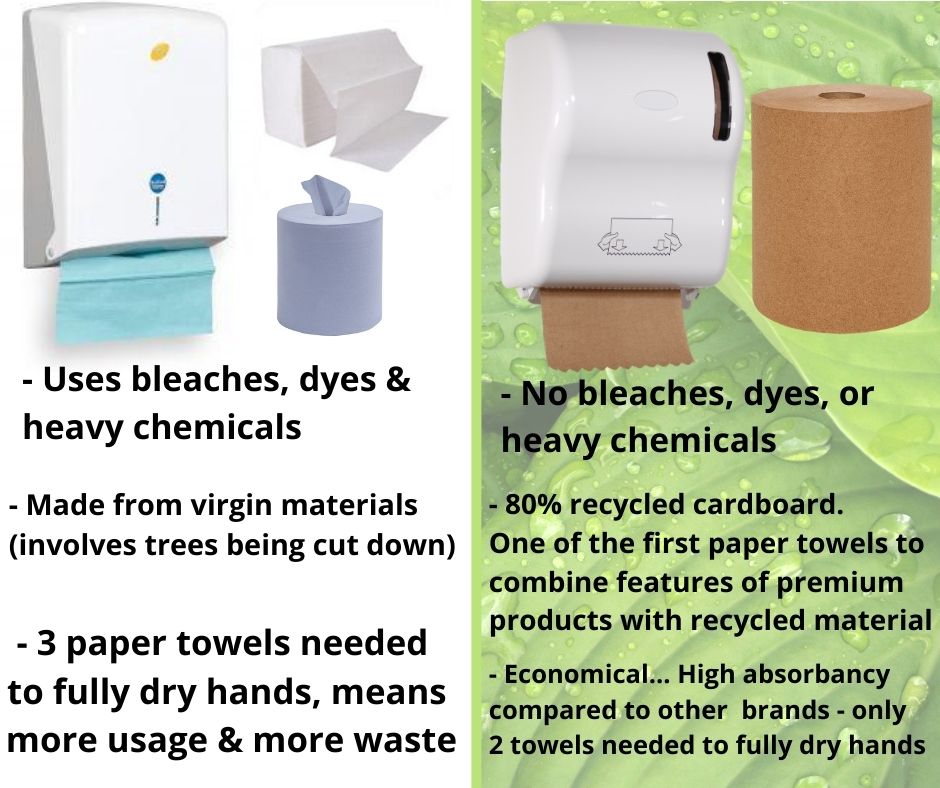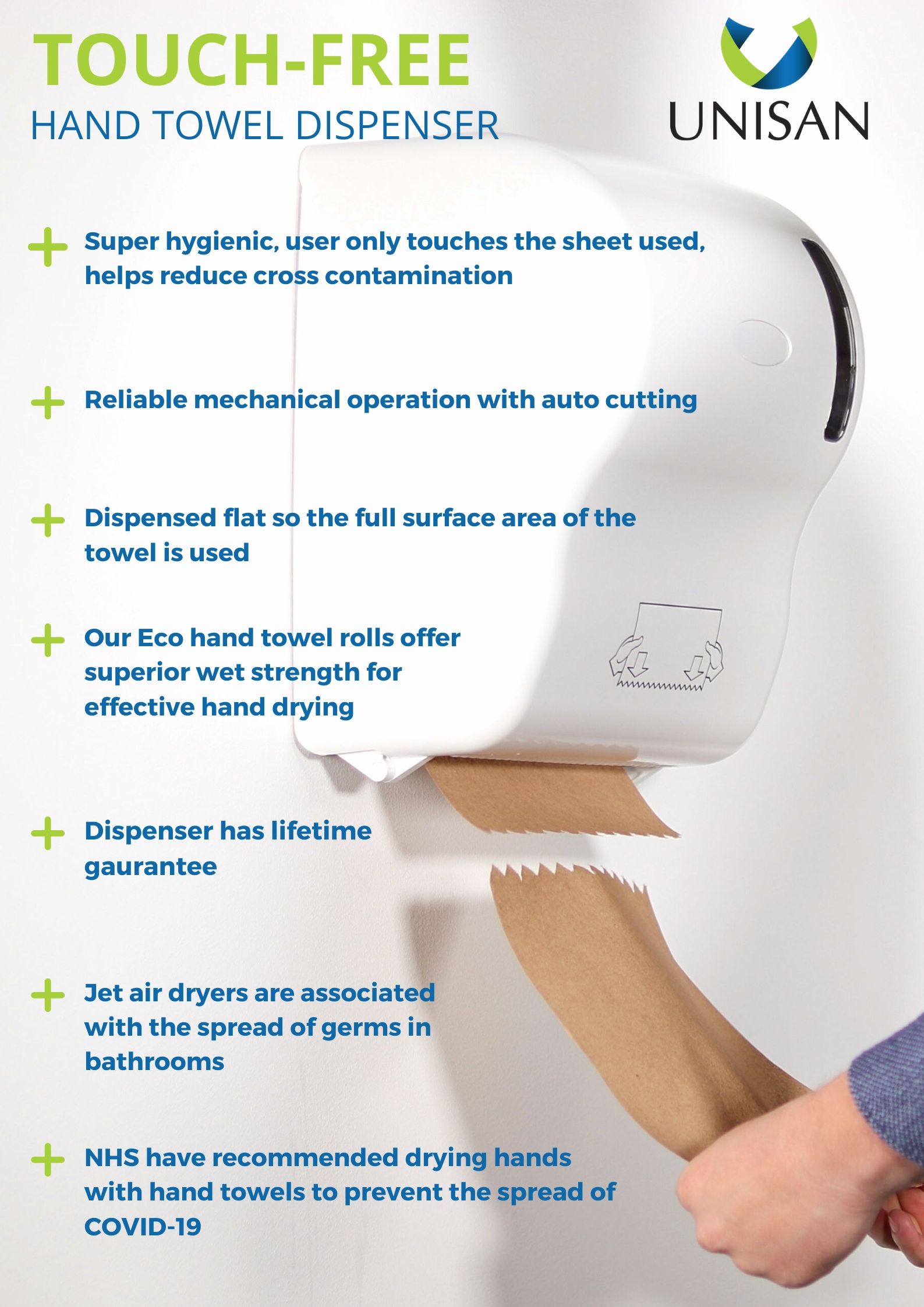The great debate over paper towels vs air hand dryers being harmful for the environment might be controversial, however, it is a topic worth discussing.
Given a choice, what do you use: a paper towel or an electric hand dryer? Or do you wipe your hands on your jeans and walk out the door?
The paper-towel-vs-hand-dryer debate makes headlines whenever a study comes out in favour of one or the other.
Which is better for the environment?
First, let’s look at paper towels. If they are made from virgin materials, this obviously involves trees being cut down to create them. Trees benefit the environment by absorbing carbon dioxide as they grow. The carbon that they store in their wood helps slow the rate of global warming. Trees also help prevent flooding and soil erosion, absorbing thousands of litres of stormwater.
Usually paper towels are treated with heavy chemicals, bleaches and dyes to make them sturdy enough to absorb water without falling to bits, and because there’s only so many times paper can be recycled before the cellulose fibres that make up the paper are too short to be woven into new products.
Although sometimes they are composted, most end up in landfill. Landfills are filled with disposable items like diapers, napkins, printer paper, notebooks, tissues, and paper towels. Learn more on landfills here. Even though paper towels can be made from recycled paper, they can’t be recycled or reused as they are considered ‘contaminated waste’. So, what happens to these paper products? Paper products biodegrade. The amount of time that paper towels take to biodegrade varies, but typically it is about two weeks to a month per paper towel. The thicker the towel, the longer it will take to digest into the environment. One of the biggest problems is that we are using our resources faster than we can replace them, which causes waste to pile up even faster.
Paper towels aren’t just trees. They include dioxins along with other components to increase the absorbency, but unsurprisingly, the process isn’t disclosed in the roll of paper towels. Also, they are bleached to offer them their white colour. The perils of chlorine bleach are well documented. Infants and toddlers are especially susceptible to the effects of chlorine bleach.
However, using paper towels doesn’t require electricity, whereas warm air and jet hand dryers do.
While the manufacturing process produces greenhouse emissions, around 98 per cent of the global warming potential of an electric hand dryer comes from the energy it uses once installed.
In a traditional hand dryer, a fan blows air across a heating element and onto your hands, which evaporates water. This is why they are hot, but it is a very inefficient way of taking water off your hands.
Depending on the model, one push of a warm air hand dryer button will produce emissions of around 20 to 80 grams of carbon dioxide equivalent.
Jet air dryers, on the other hand, aren’t hot. They work by creating a squeegee effect that whisks the water off your skin. That’s why you dip your hands in and out of the air stream. Although more energy efficient, they still use a lot of electricity to power.
When deciding whether to go for a paper hand towel dispenser or an electric hand dryer in your facility, It is important to weight up the hygiene factors, as well as the environment. The current pandemic has really emphasised the hygiene factor, and it has outweighed the environmental factor. When it comes to stopping the spread of dangerous germs, sometimes the environment has to take second place.
Paper towels were first developed as a real way for medical facilities to stop the spread of germs. The hygiene benefits of paper towels are huge in contrast to hand dryers, which easily cause the spread of bacteria and viruses.
The ‘whats best’ out of paper towels and air hand dryers depends on context.
A downside to jet air dryers is they are very loud. Some remain around 90 decibels, which is about as loud as a lawnmower! This is not necessarily appropriate to put them in bathrooms in public spaces. The UK National Health Service recommends that jet hand dryers not be used in clinical settings for this very reason, as well as how unhygienic they are.
The Hanzl Eco hand towel rolls are a great solution, as they boast great ecological credentials, as well as being the most hygienic option. They are one of the first paper towels to combine features of premium products with recycled material.
The very high absorbency compared to other paper towel brands means only 2 hand towels are needed to thoroughly dry your hands – an excellent cost reduction tool! They are 36gsm high grammage which makes it highly absorptive, and 1-ply thickness makes it very strong even when wet, for effective hand drying.
The natural colour of the hand towels reflects how natural they really are – no bleaches, dyes or heavy chemicals used in the production process, unlike most other paper hand towels.
Because they fit into a dispenser with a (battery-free!) auto cutting mechanism, it cuts the same size sheet every time, meaning you use less, and there is a lot less waste created, increasing your sustainability. High efficiency = low consumption = generates less waste.
They are also dust/lint free, which is a unique feature among recycled papers. Find out more here.
We have proven the Hanzl hand towel system to make a:
- 49% reduction in costs
- 48% reduction in labour, reloading dispensers
- 48% reduction in storage space
- 59% reduction in amount of paper used (i.e. waste)!



